For most outsiders, Aggies are mystifying. If you didn’t go to Texas A&M—if you have not drunk the maroon Kool-aid—your soul will probably never really be stirred by Aggie culture. You might even think it’s a little weird. As one UT Austin student observed, “they have so much school spirit, it’s terrifying.”
I’m an outsider to A&M. Until last month, I had never visited the campus and hadn’t really given the place much thought, beyond the fact that it seems pretty conservative and has a military group that wears jodphurs and boots.
One reason A&M has never been on my radar much is because it doesn’t have an art department. The closest they come is something called a Department of Visualization, which mostly teaches computer animation. The J. Wayne Stark Galleries reportedly do good exhibitions, but unfortunately they were closed when I visited over Memorial Day weekend.
The rest of the campus, however, is fascinating. And yes: it’s weird.
If universities project their sense of identity through their campuses, the usual image is one of gravitas, beauty, and intellectual openness (university shares the same root as universe, after all). Think stately, gracious, ivy-covered buildings of stone or red brick. By contrast, Texas A&M is a fortress: a sturdy, solid, no-frills series of beige bunkers that convey something of a siege mentality. It projects intellectual safety, rather than intellectual openness. At A&M, you get the sense that sharing in the experience of the group is more important than striking out on one’s own as an individual.
The place is also covered with bronze statues, plaques, and other memorial signifiers. I’ve heard there’s more bronze at A&M than at any other university in the country (unverified, but could be true). Every brick has a name. Every bench has a plaque. Almost nothing that can have been given a veneer of meaning has been left untouched. While it’s true that all universities have their traditions and memorials, A&M takes this notion to a whole other level.
But if you take into account that A&M was founded as a military college, this all makes sense, right down to the strikingly ugly, drab Brutalist architecture. In fact, the A&M campus feels more fortress-like than some actual service academies like Annapolis or Air Force. (West Point also looks like a fort, but that’s because it actually was one before it became a school.)
In addition to the militarism, there is Manifest Destiny on view at every turn, which is perhaps fitting for a college with “agriculture” in the name (hence the “A”). These lines from the 18th-century English poet John Dyer are engraved on the side of one building:
To Teach
The stream a better course
And till the wild
And drain the fen, and
Stretch the long canal.
In other words: step aside, Mother Nature. We can do this better.
(I mention the mostly-Brutalist campus architecture, but there are several older, more charming buildings, with pretty tile work and animal motifs. Although they do say slightly creepy things like “genetics:”)
But far and away, the most interesting aspect of the A&M campus is the remarkable number of bronze statues scattered around campus. In addition to the many statues of men who’ve been important to the school’s history, you also get oil field roughnecks, children pointing feathers towards the sky, eagles, golden retrievers, bronze tarps lying on the ground, bronze disembodied hands holding drumsticks… they are everywhere. Here is a sampling.
I think my favorite is the gigantic class ring outside the fancy new alumni center:
Elsewhere on campus:
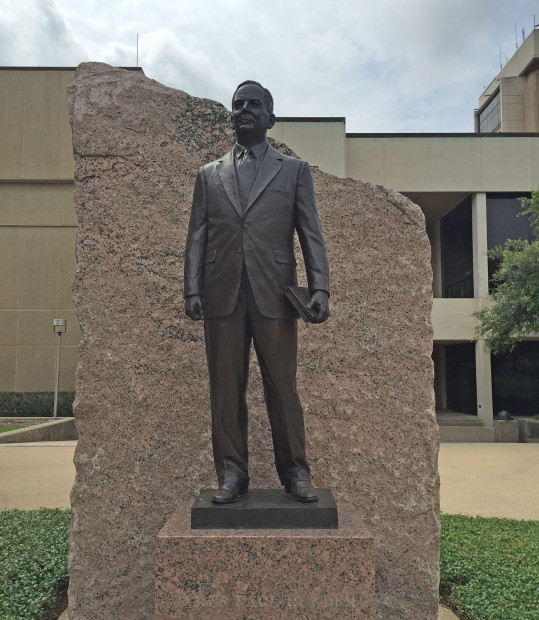
James Rudder, commander of the Army Rangers at Pointe du Hoc in D-Day (the guys who scaled the cliff under Nazi fire). He was president of A&M in the 1960s, and he dragged the school into the 20th century by admitting women, minorities, and making participation in the Corps optional. A&M probably owes the fact that it’s a huge, thriving university today, rather than the Citadel, to this man more than anyone.
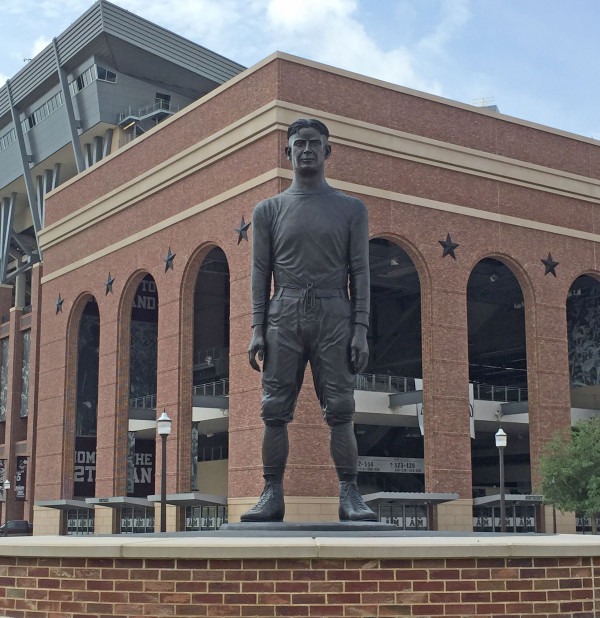
…the 12th Man, version two, outside the football stadium. (The 12th Man was a guy in the 1920s who suited up to play in a game even though he wasn’t on the team, and a potent symbol for Aggies of the importance of school spirit and willingness to serve. Interestingly, the guy didn’t actually play in the game.)
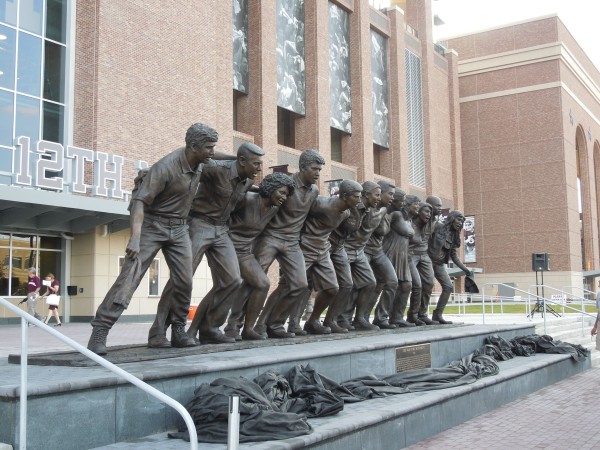
And the 12th Man, version three. There’s debate in Aggie chat rooms about the tastefulness of this one (the figures are over seven feet tall).

Lawrence Sullivan Ross, a.k.a. Sul Ross: Texas Ranger, Confederate colonel, 19th governor of Texas, and president of Texas A&M in the 1890s who is credited with saving the college from financial ruin. There are also rumors that he was a member of the Ku Klux Klan, and that his robes are buried somewhere on campus. The inscription at the base of this statue describes him as a “knightly gentleman.” (And not to pick on A&M, it should be noted that the UT Austin campus has statues of Robert E. Lee and Jefferson Davis.)
Speaking of wives, there’s a tree on campus where students traditionally get engaged:
Another statue worth mentioning is at the George H.W. Bush Presidential Library on campus (which is fascinating unto itself). This is a monument to the fall of the Berlin Wall. Apparently Mr. Gorbachev didn’t tear down the wall, the mustangs of freedom did.
So yes: to this outsider anyway, the A&M campus feels unattractive, humorless and a little silly. They have more bronze statues than you can shake a stick at, there are overbearing messages of social conservatism everywhere, and if you’re interested in good art, you’re out of luck, at least in the public spaces. These people couldn’t paint bigger targets on themselves for ridicule if they tried, right? And yet: the president of the school famously leaves the door to his house on campus unlocked. Students and faculty will tell you not to lock your car, that you could leave a computer lying somewhere on campus and it would still be there when you get back. And it would. That’s the flip side to all the sanctimoniousness at A&M: there really is a palpable, profoundly likeable sense of honor at the place (and I’m not just saying that because it’s one of their six core values that’s repeated all over campus.)
Recently, an artist who taught at both UT Austin and A&M told me that, while the UT students were far more urbane and sophisticated than A&M students, they were also more disinterested and seen-it-all-jaded. Whereas the A&M students, with their earnestness and ingrained respect for authority, were more attentive and worked harder. My friend was somewhat at a loss as to which was preferable.
******
Finally, you can’t talk about the culture of memorialization on the A&M campus without addressing the elephant in the room: the bonfire (or as Aggies call it, simply “Bonfire”). There are actually two monuments to Bonfire on campus. The first is a three-part miniature that depicts erecting Bonfire; Bonfire in flames; and the tools used to construct it. These sculptures, collectively titled “The Spirit of Bonfire,” were placed in 1987, 12 years before the tragedy:
On the other end of campus, there is also an enormous, Stonehenge-like monument to the 1999 tragedy: 12 students, mostly freshmen, were killed in the middle of the night when Bonfire collapsed, and another 27 students were injured, some very seriously. The memorial, like the old bonfires themselves, dwarfs anything comparable on campus. It is as enormous and solemnly grand as something you might see on the Washington Mall or the beaches of Normandy. Indeed, it’s so grandiose as to seem almost tone deaf, at least to an outsider—after all, more A&M students died in each of the various wars of the 20th and maybe 21st centuries than in Bonfire, yet none of those memorials warrant several acres of hewn, engraved stone. I asked a friend of mine who went to A&M about it, and here’s what he said:
I’m the worst Aggie in the world, but Bonfire was the only Aggie tradition I thought was unique and historical. I never wanted to go work on it, but a lot of kids at that school did, and a lot of them wanted to be “part of the school.” Consider that they worked on it for months; it was more than just one football game thing. It was months of getting up at 4am and working like a lumberjack. Personally, that was nothing I was interested in. But when you went to one, there was no denying it was awesome. You could feel the heat coming off it 2 miles away. It was impressive. So then, [when] these kids died, every Aggie felt it. Then…recriminations, blame, finger pointing (that happens when kids die) but instead of saying, let’s engineer something safer or figure out what went wrong, they just killed it. To me it was a sign of the times a bit: “If it’s scary, it needs to go away.”
So that’s the thing: for Aggies (even self-described bad Aggies like my friend), Bonfire stirs up a painful mix of emotions. The memorial is disproportionate to the war memorials on campus, because Bonfire looms disproportionately large, still, in the collective Aggie imagination. It’s hard not to wonder what this memorial will mean to future generations, when the pain of the loss is abstract and forgotten, and there is no living memory of the old 6-storey log burn involving thousands of felled trees. Will it seem like an odd corner of campus? Or will it, like most things at A&M, be encrusted with ever more layers of solemnity, sacredness, and meaning?
Correction 6/7/15: The “M” in A&M was originally misidentified as “military.” It stands for “mechanical,” representing the engineering schools at Texas A&M.


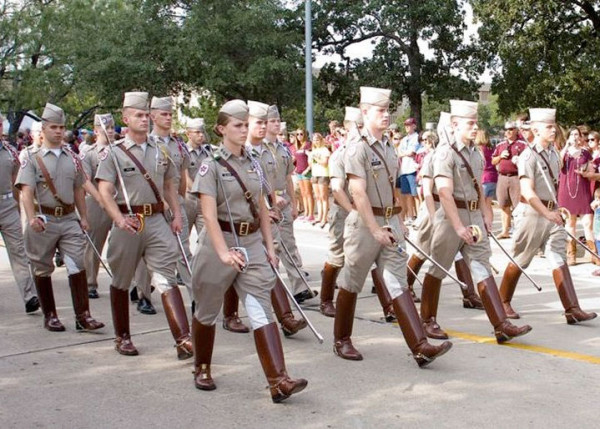





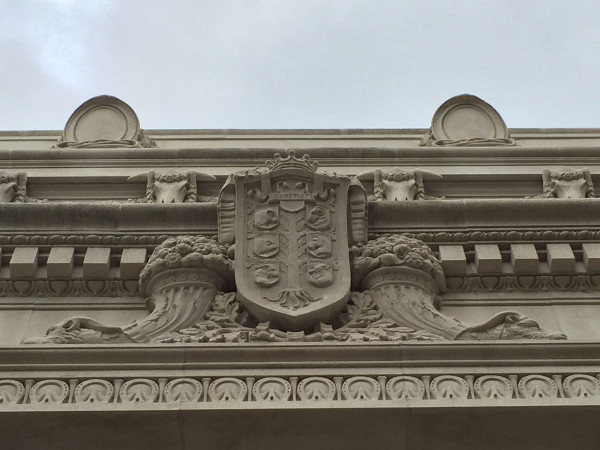


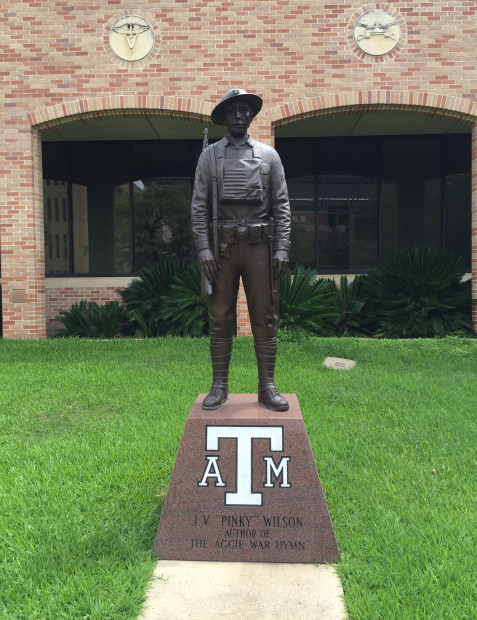

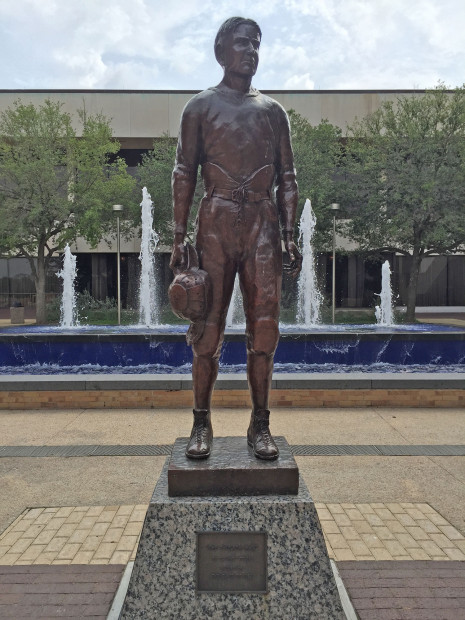
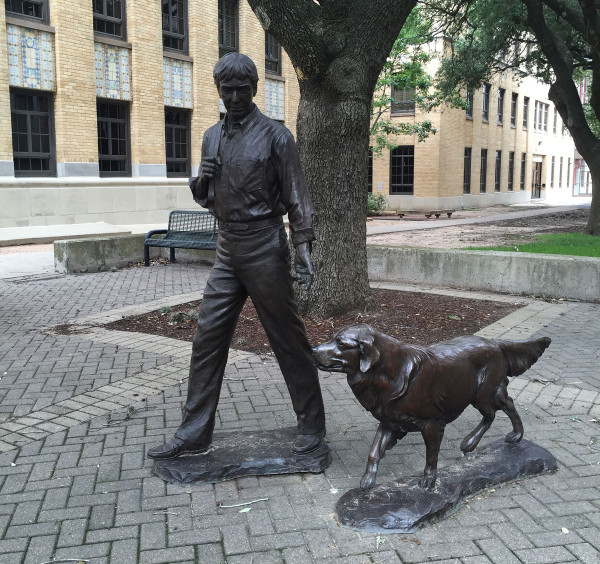
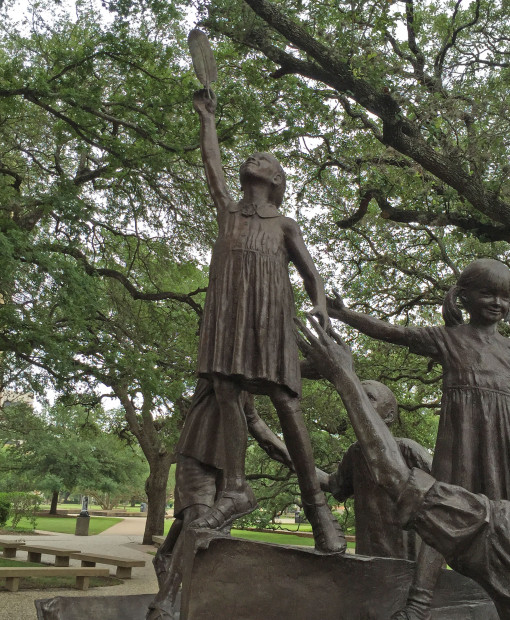
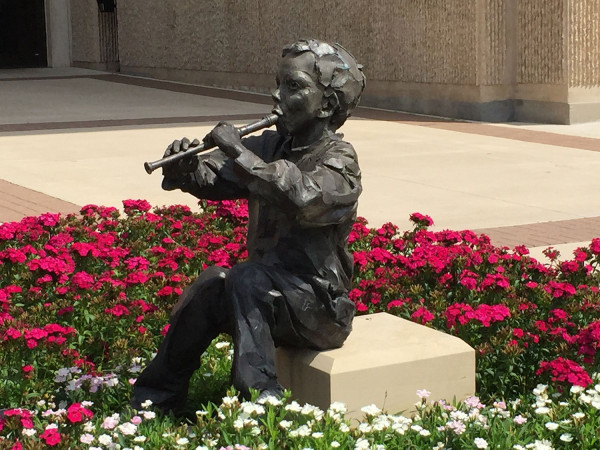

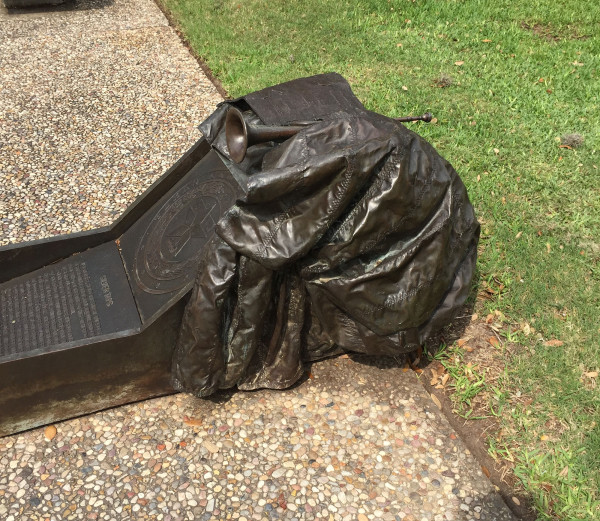
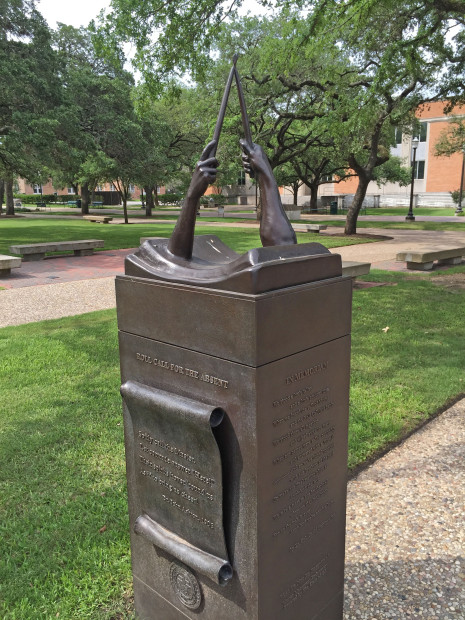
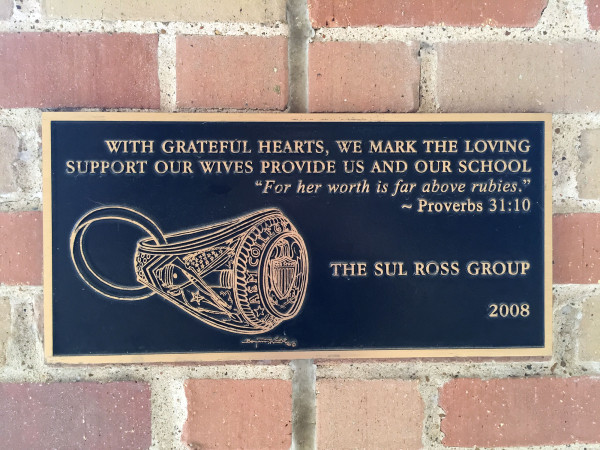
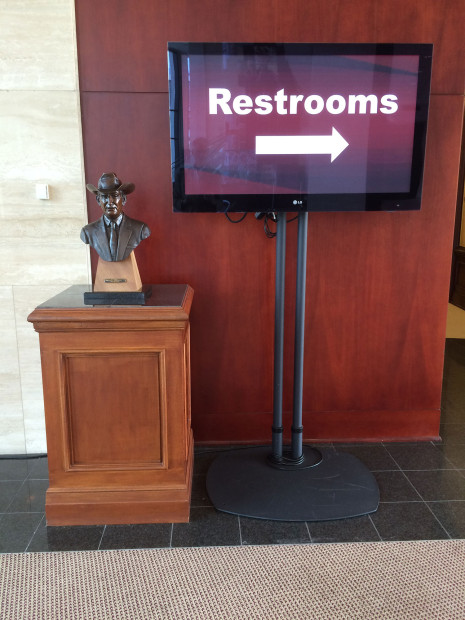


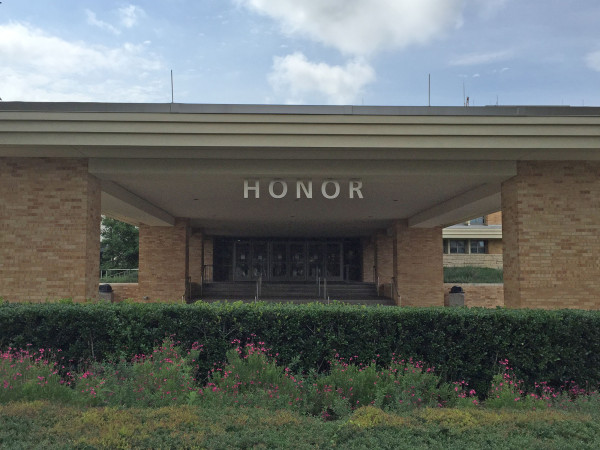
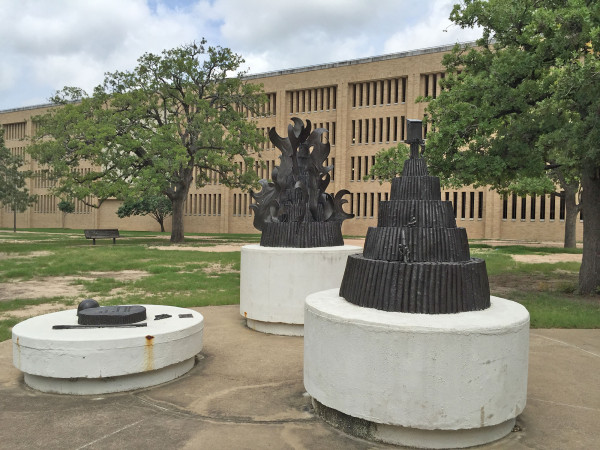
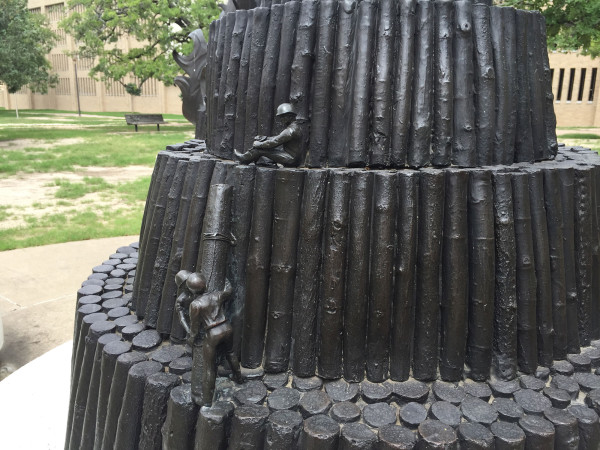



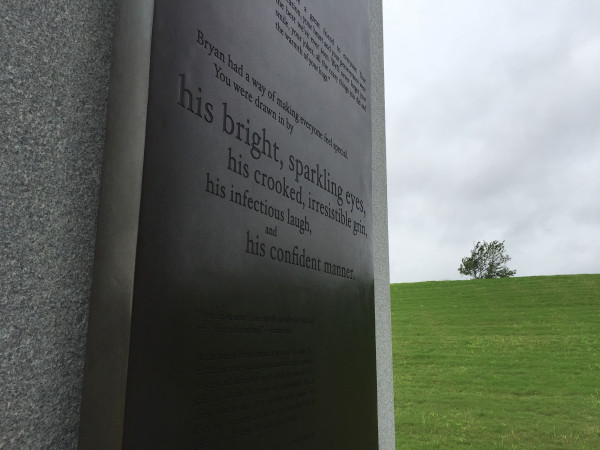
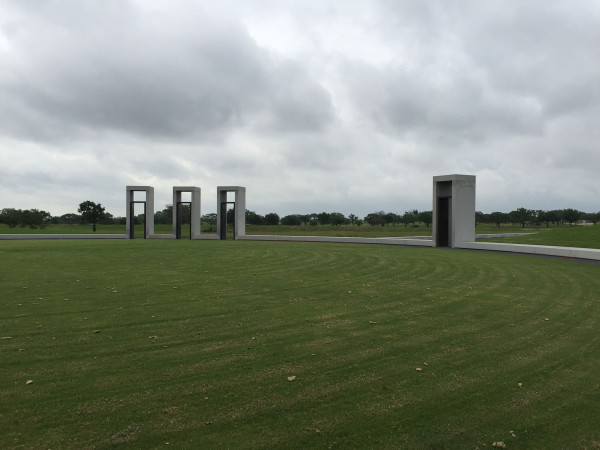

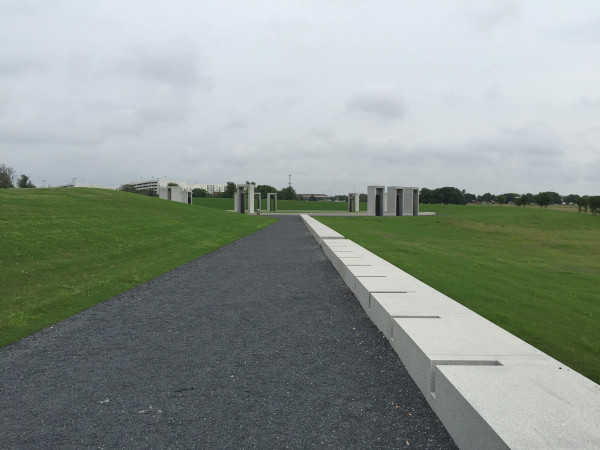
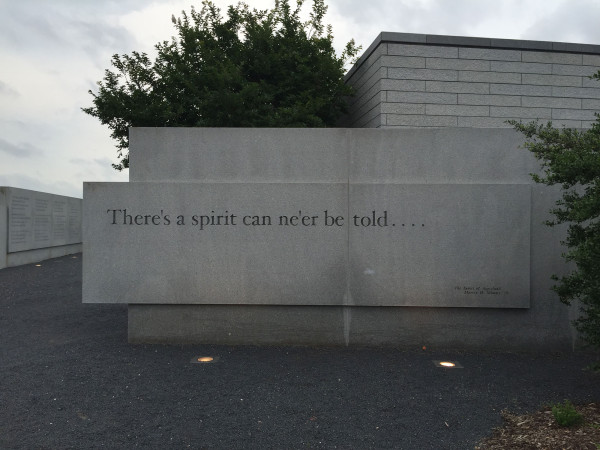

62 comments
The “M” actually is for mechanical not military. As with a number of schools founded after the passing the Morrill Act of 1862.
Actually, the “A” and “M” don’t stand for anything anymore. We were the Agricultural and Mechanical College of Texas (TAMC) but when we changed to Texas A&M, the “A&M” are more of a placeholder to the past and don’t stand for anything.
*Source: I am a former tour guide*
Lawrence Sullivan Ross was not a Confederate colonel, he was a brigadier general. I was a cadet in the Corps at A&M at a time when other college students were shirking their civic duty to serve in the military during the Vietnam War, and were burning draft cards and our Colors. At A&M, we were saluting the Flag daily, and standing fast for our Nation.
And we still do. I’ll take A&M over the anti-American educational community elsewhere, anytime. The Corps motto (Per Unitatem Vis–Through Unity, Strength) echoes it’s mission to produce officers who are “soldiers, statesmen and knightly gentlemen.” They have done so, and have been distinguished in service and combat in wars from the Indian Wars onward. In this uncivil society, we could certainly use more of that kind of American–service and sacrifice over comfort.
Charles, I couldn’t agree more with your last sentence. Can you imagine a politician today telling us to ask not what our country could do for us, but what we could do for our country? I have always thought that a German-style required service period for young people (in the Peace Corps, civil service, community service or military) would be a good thing.
Very much spot on but a couple of factual issues. The “M” is actual for mechanics. Hence the enormous and wildly diversified engineering college. Then, the Berlin wall exhibit at the museum is actually a piece of the Berlin wall. Other than that – great read!
My friend who gave me the Bonfire quote just texted me that I had gotten the M wrong… argh! It’s frustrating to do so much research and miss something obvious and basic like that. Will make that correction. Thank you for the comment.
But the Berlin Wall is actually a recreation, per the plaque in front of the statue:
https://glasstire.com/wp-content/uploads/2015/06/am-mustangplaque.jpg
You and Chris are both correct about the Berlin Wall. The wall at the Mustang statue is a recreation while the piece featured in the library is an actual section.
Just for the sake of sharing information, there are actually 3 Bonfire memorials on campus. In addition to the 2 that you shared, there is a third one at the FHK dorm complex on the north side of campus. It memorializes the three students from the FHK complex who lost their lives in the 1999 collapse.
Rainey, will you be reviewing the campuses of all Texas colleges/universities?
A&M is interesting, and very much off the radar of the TX art scene, which is why I wrote about it. I attended Rice and UT Austin, both of which have better public art than A&M. But while their art is tasteful and geared towards art world insiders, it’s not as interesting (mostly), and therefore probably not something I’d write about.
I do have a soft spot for the Michael Heizer at Rice:
https://www.youtube.com/watch?v=UTZi7xzAFf0
An interesting statistic would be how many current students come from Aggie families. I was 3rd generation myself. The Aggie spirit is strong on and off campus.
Thanks for pointing out the lack of arts, though. I bleed maroon and always will, but being a Theatre Arts major there showed me just how little the university cares about the arts. Most say that if you want an arts education go somewhere else, but when you come from an Aggie family that’s just not an option. I bled maroon long before I could say “Gig ‘Em.”
“From the outside you can’t understand it. From the inside you can’t explain it.”
Old Army Fight!
Gig ‘Em,
Lauren L. Lanier ’02
Thanks for the tour of the sculptures. I had to skim over parts due to the blatant bias. Did you happen to visit any of the campus art galleries? They have some excellent exhibits. BTW- many of those non-art “Visualization” students end up with prestigious jobs at Hollywood special effects studios – jobs that many fine art students I’ve taught long for.
Go Bruins and Gig- em
M.F.A. UCLA
Ph.D. TAMU
The problem with skimming is you missed the part where I said the campus galleries were closed the day I visited. Regarding bias: I have strong opinions about art and I left them out for the most part. I think these pictures speak for themselves. People either see it or they don’t.
Your point about getting a good job with an art degree is a big conversation which deserves an article unto itself.
Nancy, which sculptures were “blatantly biased?”
A section of the actual Berlin Wall is inside the museum, FYI.
Rainey, you are cracking me up! When you came to town and stumbled upon the art installation in downtown Bryan, a good review came from the place. To mention SEAD Gallery owners as being the hub; an insult to those who have made and show and facilitate art in a place where few get it for decades now! SEAD just began, as much more will come, given that we (yes) are now a Cultural Arts District.
The absolutely hilarious part came after reading your new review of the campus, the spirit and the conservatism. You are spot on!!! I’d rather lock my doors and be alert for dishonorable people than to live in this vacancy of art appreciation.
Might I ask of you? Please check out my art on Vimeo. I live here! I use my art, in part, to address a centuries old culture war, to confront religious views in the presence of Science…and then some.I resuscitate on trips to Houston and Austin and when my work takes me out of here. SOS. Come visit me in my studio on your next visit!
Sincerely, an artist wife of Faculty, Becky Eddy Phillips
Thank you Becky, I will!
For what it’s worth, I’d attribute the preponderance of ugly, Brutalist architecture to the time period when A&M saw the most growth (70’s and 80’s) than to the militarism. The more recent buildings (i.e. Chemical Engineering, the Business school) may not be anything to write home about, but they’re not as cold as the ones built in the post-Rudder boom.
If anything, I’d characterize the newer buildings as corporate-influenced, rather than military-influenced. Which certainly goes along with your friend’s observations about the student body. Corporate America is not seen as an institution to be distrusted by most A&M students, rather it’s seen as aspirational.
Great article!
Very valid point. Brutalist architecture (as Prince Charles and the Whitney museum could tell us) left its ugly, depressing mark all over in the mid-20th century. But while many schools have examples of the genre–the hideous Lovett College at Rice comes to mind–it doesn’t usually dictate the look of the entire campus the way it does at A&M. Whoever made the decision early on to make all the buildings beige did the school a disservice, especially in its prairie setting. The color feels relentlessly drab and ugly. (You notice Kyle Field went from beige to red brick when they redid it.)
That said, I was sorry not to be able to see the Jack Williams administration building on my visit. I’ve heard it was recently redone and is quite beautiful inside.
If you think Lovett College is hideous, I hate to think how you’d characterize old Wiess College, assuming you were at Rice when it was still standing.
I’m not really inclined to leap to the defense of A&M’s Brutalist architecture, but I do think that many other Brutalist buildings tend to get tarred with an overly broad brush at times.
Oh, I loved the old Motel Weiss. Good friends there.
In that case, you might find this site of interest, if you haven’t seen it before:
http://www.edesigns-graphics.com/wiess/index.html
I hit the Motel Exacta at Rice, as I lived in both “Motel Wiess” as well as the Tidelands Motel the first year after it was repurposed as the Graduate House.
I’d agree. I’ve no love for the Aggies, but I think Rob is right. The buildings at UT of the same era (UTC, Burdine, RLM, LBJ School & Library) are similarly brutalist. When I lived there, we used to say that the only previous experience of the architect of Jester was building prisons.
Great review, and I appreciate the link to your website!
appreciate the virtual tour, rainey! all those looking for a sterile review ought to march themselves right over to wikipedia.
Honest approach, as an Aggie I would tend to agree with most of this. The recent buildings constructed are muuuch better looking than the concrete slabs erected in the 70-80s, yet still convey much of the same values that you mentioned the campus portrays.
The one sticking point, would be the Bonfire memorial being more prominent than anything for the Aggies lost in the World Wars. While many schools have a “Memorial Stadium” or the like, the Memorial Student Center is actually treated as a memorial to those who lost their lives: hence the sometimes overbearing strictness regarding hats in the building and walking on the grass. The Bonfire memorial is undoubtedly a better piece of public art and sticks out on first glance, but as a student on campus you feel a connection to the MSC and those who sacrificed their lives everyday as opposed to the once-a-year remembrance at Bonfire.
But once again, refreshing to see an actual artistic take on the campus rather than the usual “meh, it’s ugly,” and not give it the time of day.
I can see that the MSC would be the heart of campus, and I understand its meaning, having spoken to another friend who’s a Corps alum and who loved the Flag Room. I myself thought the Medal of Honor hallway was cool (I didn’t like the etched glass presentation, but hey). I loved the antique flags that were in frames in the adjoining study room.
The allegation that Sul Ross was a member of the KKK is a long-running rumor in the English Dept. (specifically the Africana Studies professors) that I searched hard to find any substantiation for while a graduate student there ten years ago. Biographical materials that I could find in the school library made no mention of it, nor did any Google search results. The rumor when I was there was that his KKK paraphernalia (different versions of the rumor say “ropes” or “robes”) was in the Special Collections at the Cushing library, but when I contacted Special Collections, they had no such thing. Now I am amused to hear that it is “buried somewhere on campus.” The only concrete evidence that spreaders of the rumor could give me was the phrase “Knightly Gentleman” on his statue base, but this was a quite common expression in the 19th Century in the South, owing to the popularity of the novels of Sir Walter Scott (see Mark Twain on why Sir Walter is to blame for the Civil War).
In short, absent any verification of this rumor, I would request that you edit the caption and not help to perpetuate it. Lawrence Sullivan Ross made immense contributions to public education in this state and does not deserve to be called a KKK member simply because he was a white male living in the 19th century.
I would like to second Mr. Mattair’s comment. The rumor that I have read in several places over the years appears to be just that. In his personal letters it is never mentioned and the University archives do not have his “robes” as is commonly claimed in places online.
Absolutely concur. I was a history major at A&M in the mid to late ’70’s, and worked in the “stacks” at the Cushing Library (most of A&M’s archival data is in those stacks). For one of my graduate classes I read all the correspondence we had from and to Ross and most of the known writings about him. In none of those writings is there a single indication Ross carried any animosity towards those of African descent. Almost all of his correspondence was dedicated to repairing his state after the ravages of war. His letters show a highly educated man with a deep sense of duty, sorrow not over the loss of the war but deep regret over the loss of life. I cannot recall reading anything that would justify repeating a vicious and unsubstantiated rumor about membership in the Klan. Disgusting that the author of this piece thought mentioning that, with out the proviso that no evidence has ever been found to substantiate it. Sorry, but modern journalism tends to make excuses for a lack of due diligence, and that comment was out of line. And…… Ross was a general. The inscription on the statue actually reads: (Front) – Lawrence Sullivan Ross 1838-1898. (Back) Soldier, Statesman, Knightly Gentleman; Brigadier General C.S.A., Governor of Texas, President of the A&M College.
Even a cursory glance at the affections bestowed on Ross by the people of Texas after his death would lead one to dismiss this kind of drivel, which the author apparently inserted to show that all Southerners who obeyed the conventions of their day and volunteered to serve their country (as they saw it), must have all been racists. That is revisionist history at its absolute worst. Ross’s tenure as governor was highlighted by a rapid expansion in programs that cared for those less fortunate and his own deep personal humility was evidenced by the fact he never sought political life, and retired from it as soon as he was able.
His first love was always about those things that related to his duties, those bestowed on him by convention and thrust upon him by circumstance. There is no record, ever, of Lawrence Sullivan Ross working to disenfranchise another human being after the war was over. Everything in history points to the exact opposite.
Ross was a great man, and a kind man. Just because the writer thought he had to put something in there to confirm the “cult” nature of A&M, he picked the cheapest, easiest and most prejudicial of all tactics, quoting a rumor and giving it credibility by inferring that even the great liberal state university in Austin also had statues to other “wink, wink” racist men of the old South. What a load of crock.
Mr. David B,
I wish to respond to your comment about Sul Ross and your defense of him.
You write:
“In none of those writings is there a single indication Ross carried any animosity towards those of African descent.”
This is absurd.
Sul Ross fought for the so-called Confederate States of America. He was a traitor to the United States and swore allegiance to a “country” (never recognized by the United States) whose very constitution established slavery as its core reason for being. [“…the institution of negro slavery as it now exists in the Confederate States, shall be recognized and protected by Congress…” -CSA Constitution] And there is significant evidence that those under his command at the Battle of Yazoo City he ordered the execution of black prisoners, a common practice by Confederates.
Which is worse, being a general in the Confederacy or a member of the KKK? That distinction is the very definition of splitting hairs.
In case you wish to stand by your own revisionist history that those in the south only wished to honor their “country” as “thrust upon them by circumstance,” I offer each state’s declaration of secession in its own words:
http://www.civilwar.org/education/history/primarysources/declarationofcauses.html?referrer=https%3A%2F%2Fwww.google.com%2F?referrer=https://www.facebook.com/
From Texas:
“…maintaining and protecting the institution known as negro slavery– the servitude of the African to the white race within her limits– a relation that had existed from the first settlement of her wilderness by the white race, and which her people intended should exist in all future time.”
Actions speak louder than words. Sul Ross was a general in the Confederacy. Ross, like his Confederate comrades, was a traitor and fought for institutionalized racism, i.e. slavery. It is your defense of Ross and your revisionist history of the Confederacy that is a load of crock. Sul Ross was not a great man.
Your overly simplistic take that all who fought for the Confederacy were traitors and racists is appalling. You cannot judge that time in history through the lens of the 21st Century. They were men who fought for something they believed in… most were Americans by birth, who simply could not abide the politics of the time.
Many who fought for the South were not slave owners, nor did they necessarily have any animosity toward a race of people. Slavery was the law of the land until January 1, 1863. For most in the South, the primary issue was ‘state’s rights’, not slavery per se… yes, keeping slavery was important to the southern economy, but many knew it was only a matter of time before it was abolished.
Robert E Lee was offered the position as Commander of US forces, but could not bear to raise arms against his beloved Virginia. Does that make him a traitor or a racist? Thomas Jefferson believed more strongly in state’s rights than in the United States itself and he is considered the wisest man in the history of the nation. Jefferson and his fellow Republicans so believed in the cause of state’s rights that they assisted in writing the Second Amendment (which does not mean what it is now thought to guarantee), believing it necessary for each state to establish a state militia to protect itself from invasion by the federal forces. Jefferson did not believe the United States should even HAVE a standing Army, believing that each individual state should conduct its own defense. Jefferson, that champion of liberty who owned slaves his entire life, fathered six children with one of them and owed his very election to the way slaves were counted in the allocation of representatives to Congress.
The three-fifths compromise which allowed the South to count each slave as 3/5 of a person in determining population for legislative apportionment, meant that Southern states held power far in excess of their actual number of free white voters. Jefferson defeated John Adams by eight votes in the electoral college and received at least 12 as a result of the additional votes granted to Southern states due to the 3/5 compromise. In the first 62 years of the nation, from Washington until 1850, slaveholders controlled the Presidency for fifty of those years and the only men reelected as President (Washington, Jefferson, Madison, Monroe, and Jackson) were slaveholders. Every Chairman of the House Ways & Means Committee and 18 of the 31 SCOTUS judges were slaveholders as well. Today’s politicians claim that the founding fathers worked tirelessly to abolish slavery, but history simply does not bear this out.
Thomas Jefferson abandoned the anti-slavery idealism of his youth as politically impractical; he believed slavery was evil and doomed, but was fearful that emancipation would lead to race war and economic ruin to the country. He also believed that blacks and whites could never peacefully inhabit the same country. Do those beliefs or his inaction towards ending the institution of slavery make him a less than great man as well?
Even Abe Lincoln, champion of the Emancipation Proclamation, did not believe blacks were equal to whites; only that they deserved to live free. Lincoln was an avowed white supremacist, and made clear his opposition to the expansion of slavery in the territories should not be construed as favoring making electors or jurors of blacks, allowing them to intermarry with whites, etc. “As much as any man,” Lincoln said in debating Douglas, “I favor the superior position being retained by the white race.”
In the mid-1800s, neither in the North, nor anywhere on the planet where white people of European descent were in the majority, did people of African descent enjoy full legal equality, nor were they regarded as even POTENTIALLY the social equals of whites by any but a tiny fraction of the white population.
Not more than 10% of the Northern whites were abolitionists, and many of the prominent (white) abolitionists were the worst sort of patronizing racists (describing blacks as monkeys etc.). That the North abolished slavery state-by-state in the first half of the 20th century had more to do with economics than morality, and nothing at all to do with any view so enlightened as to regard blacks as equals. By 1850 not more than 10% of Southern whites proposed perpetuating the institution in perpetuity. Had there been no war, many historians believe there would have been an emancipation, with compensation to slave owners, by1885, as was eventually done in Brazil. Whether the carnage and destruction that accelerated the process by a mere 20 years was worth it is hard to say.
The South numbered six-plus million whites and three-plus million slaves prior to the war; the Union states had total population of about 23 million. The South furnished an outrageous portion of the national budget, which Northern-dominated Congress spent mainly on “improvements” in Northern states. Northern opposition to permitting slavery in territories was in large measure designed (1) to exclude blacks COMPLETELY from the territories (several Northern states, after the war, passed laws forbidding freed blacks from the South to settle, or even enter their territory) and (2) to maintain unjust status quo, with cotton, and the South, bankrolling the lion’s share (three-fourths) of the federal budget.
While Southern slavery should NOT be romanticized or excused, the slave owners had some justification in resenting the Northerners WHO HAD SOLD THEIR SLAVES SOUTH JUST DECADES BEFORE and who had been the primary profiteers of the importation of Africans (most slaves came via Newport and other Northern ports) and who continued in the 1850s to benefit very substantially, with taxes from slave-picked cotton being sent North to build railroads.
Several non-seceding states had, and continued to have, slaves throughout the war (KY, MO, DE, MD, even NJ, albeit in small numbers) and Lincoln, and many other Northern leaders, disavowed any intent to end slavery where it existed. General Grant said he had no understanding that the war was being fought to free blacks and, were that the case, he would fight on the other side. Robert E. Lee freed his family’s slaves before the war, but fought for the Confederacy. My ancestors did not own slaves and professed to regard slavery as an offense against God did likewise, and shot as many Yankees as they could.
As for secession, before 1860 virtually everyone concurred (Lincoln included) that the States had that right. New York’s accession to the Constitution specifically reserves the right of secession! The ideals that the Confederates defended, such as the reservation of rights not specifically enumerated to the States, or to the people, were then and remain, valid today.
As for “treason,” suffice it to say the Radical Republican lawyers tried, and failed, to come up with a theory to put Jefferson Davis on trial. Reconstruction did not fail for lack of Northern will to punish the South — rather, blacks were exploited to denude white southerners of wealth, by people who despised them as much or more than the southern whites did. When that purpose had been pretty much fulfilled, the North dropped the blacks like hot potatoes.
As a native Southerner, I regret that most Southern whites wound up clinging to the imagined racial superiority. In my childhood, I was shocked, disgusted, and ashamed when I experienced Jim Crow. I am likewise horrified that white southerners vote Republican, whether for racial reasons or otherwise.
But racism was, and remains, a sin of nationwide distribution. And before you froth at the mouth about mid-19th century slavery, my friend, survey carefully your possessions, reflect on where, by whom, and under what conditions many of them were made and consider whether our energy is better spent in demonizing the descendants of Dixie slave owners, or shining a light on labor and economic issues of our own time, in which the slavery or its near equivalent flourishes, only it has been “off-shored” where we need not gaze upon or be troubled by it.
And, if you cannot see that one can be Southern, white, and not a far-right, racist “cracker,” you are trafficking in stereotypes no prettier than those used to denigrate blacks, Jews, Arabs, and others.
The following is a response to the comment of Mr. Ed Chambers on May 3, 2016 as a response to my comment about Sul Ross, August 12, 2015.
I wish for readers to know the fallacies and falsehoods put forth by the commentator because I believe it is important. My comments are not meant for Mr. Chambers because I consider that to be a waste of time. I believe that nothing I say will change his mind. What I have to say is to offer a counterpoint to the readers of this public forum who may not know the specifics of the history or of the individuals referenced. One may argue that lengthy comments about a relatively obscure Confederate general on an art blog is an insignificant forum for a conversation about some people’s distortions of American history. Alas, that may be so. On the other hand: Donald Trump.
I respond to only a few comments and arguments by Mr. Chambers, although I could address more. But I emphatically disagree with the overall position, including the logic, or lack thereof, to defend or justify Sul Ross.
First, I wish for it to be known the context from which I speak, since Mr. Chambers apparently thinks that self identification, commonly known these days as “identity politics,” has something to do with clear thinking or the topic of the treasonous institutionalized racism of Sul Ross (or any Confederate). It does not. While it makes no difference to the topic at hand, I am white. I grew up in Nashville, Tennessee. My childhood was steeped in southern history, “Dixie,” and racism. I am aware of “states rights” and “southern heritage.” My cultural and historical knowledge of this topic is extensive and crisp. My experiences, references, research and knowledge come from sources other than Wikipedia. I am not frothing from anywhere.
Thus:
Mr. Chambers: “Your overly simplistic take that all who fought for the Confederacy were traitors and racists is appalling. You cannot judge that time in history through the lens of the 21st Century. They were men who fought for something they believed in… most were Americans by birth, who simply could not abide the politics of the time.”
Mr. Chambers immediately gets off to a bad ad hominem start by stating that my “take” is “simplistic.” It is not. See above. An additional fallacy that Mr. Chambers employs is to accept the “that’s just the way it was then” 21st Century viewpoint. It is not only a fallacy, it is false. There were those, in abundance, who believed the same way about slavery in 1860, as well as 1788, as they do today. Documentation is too lengthy to include here, but I will offer at least one example below.
Mr. Chambers: “Robert E. Lee was offered the position as Commander of US forces, but could not bear to raise arms against his beloved Virginia. Does that make him a traitor or a racist?”
Yes. It specifically makes him a racist and a traitor. See my original comment regarding the CSA constitution (small “c”). While the phrase “institutionalized racism” may be a careless, cavalier and inaccurately overused phrase these days, swearing allegiance to a constitution whose foundation was based upon the ownership of other humans seems to me, at least, to be racism. Again, ad absurdum, for Lee to serve as commander of the Confederate forces, he swore allegiance to the Confederacy and its constitution, not to Virginia. Contrary to the nonsense of “states rights” advocates then and now, Virginia was never a country. Lee took up arms against the United States of America of which Virginia was a part. Going to war against one’s own country is the very definition of treason. What kind of thinking would conclude otherwise?
Mr. Chambers: “Thomas Jefferson abandoned the anti-slavery idealism of his youth as politically impractical; he believed slavery was evil and doomed, but was fearful that emancipation would lead to race war and economic ruin to the country. He also believed that blacks and whites could never peacefully inhabit the same country. Do those beliefs or his inaction towards ending the institution of slavery make him a less than great man as well?”
Yes. Jefferson was less than a great man specifically because he owned slaves. I am not the only one to hold this opinion then or now. Jefferson had slaves and never freed them despite whatever he wrote.
Furthermore, Jefferson had very little to do with the actual founding of this country or with the Constitution of the United States. He was not present at the Constitutional Convention. While Mr. Jefferson’s flowery introduction in the Declaration of Independence is timeless, technically speaking, until there was a Constitution, there was no country called the Unites States of America.
If the reader wishes for an alternative to compare to Jefferson and views about slavery in his time, I suggest Alexander Hamilton. Hamilton, Washington’s undisputed right-hand man during the Revolutionary War, crossed the Delaware, froze at Valley Forge, and stormed the walls at Yorktown. (Where was Jefferson?) Although Madison was its main author, Hamilton helped to write the Constitution and lay the intellectual structural framework of the foundations of it and of this country. Additionally, Hamilton wrote most of the the Federalist Papers. In both words and deeds, Hamilton dwarfs Jefferson in his contribution to the founding of the United States. The examples are copious. Hamilton was flawed, as every human is. But he was not flawed enough to own another human being. Furthermore, Hamilton, along with founder John Jay, was a member of the New York Manumission Society. Hamilton detested Jefferson.
My point with the Hamilton comparison is to offer an alternative to anyone’s justification of slavery, and using people like Thomas Jefferson or the fallacious rationale of “his time” to do so. It is lazy thinking and historically and factually false.
Mr. Chambers: “Even Abe Lincoln, champion of the Emancipation Proclamation, did not believe blacks were equal to whites; only that they deserved to live free. Lincoln was an avowed white supremacist, and made clear his opposition to the expansion of slavery in the territories should not be construed as favoring making electors or jurors of blacks, allowing them to intermarry with whites, etc. ‘As much as any man,’ Lincoln said in debating Douglas, ‘I favor the superior position being retained by the white race.'”
Abraham Lincoln was not merely a “champion of the the Emancipation Proclamation.” He was its author.
Mr. Chambers’ references a quote by Lincoln that predates the Civil War as his opinion about Lincoln’s “white supremacist” beliefs. [The reference is from Lincoln’s fourth debate with Douglas, Charleston Illinois, September 18, 1858.] Mr. Lincoln’s views about slavery and “the negro” changed throughout the Civil War. This is well documented. There is an intellectual, philosophical and moral chasm between Lincoln’s views at the time of this quote and the Gettysburg Address.
Mr. Chambers justifies Sul Ross by comparing him and the Confederacy to Lincoln and the Emancipation Proclamation. I consider any comparison of the intellect of Ross to that of Lincoln in any way to be grotesque.
Mr. Chambers: “New York’s accession to the Constitution specifically reserves the right of secession!”
This statement, complete with exclamation (!) is false. I begin with this:
“I am sorry that your situation obliges you to listen to propositions of the nature you describe. My opinion is that a reservation of a right to withdraw if amendments be not decided on under the form of the Constitution within a certain time, is a conditional ratification; that it does not make New York a member of the new Union, and consequently that she could not be received on that plan… The Constitution requires an adoption in toto and for ever.”
– James Madison, letter in response to Alexander Hamilton regarding if any “state shall be at liberty to withdraw from the Union.” [Hamilton Papers, July 20, 1788. Hamilton read this letter on the floor of the Constitutional Convention on July 24, 1788.]
As stubborn as the anti-Federalists of northern New York were, New York was not granted the conditional possibility of seceding from the Union when they voted to ratify the Constitution. Nor was any other state. During the Constitutional Convention, the motion for conditional ratification was put forth by New York several times and each vote was defeated. As per the Constitution (Article VII), only nine of the thirteen states were necessary for ratification. The ninth state to do so was New Hampshire who voted to ratify on June 21, 1788. This is high school history. Despite the drawn out complexities of the ratification of the Constitution, it was eventually finally unanimously and unconditionally ratified. Period.
Jefferson, his owning of people, Hamilton’s courage and intellect, New York’s participation in the Constitutional Convention, where Mr. Chambers or I were born or our “cultural heritage,” all are red herrings and have nothing to do with the treasonous institutionalized racism that Sul Ross swore to and fought for.
Mr. Chambers argues and equivocates on behalf of Sul Ross.
I contend that Sul Ross was a traitor to the United States by swearing allegiance to the Confederacy, and, as such, a racist.
“Both may be, and one must be, wrong.” – Abraham Lincoln
Very fun time warp for me, Rainey. Thanks for sharing your outsider thoughts and all the photos. I enjoyed my seven years living in B/CS (’93-’00), culminating with a M.S. degree from the Visualization Program. I was one of the several Viz Lab students that actually didn’t want to go the Hollywood effects houses route. Interestingly, when the internet company I was working for went belly-up in 2003, I decided that what I really wanted to do was teach art, but quickly learned I couldn’t at the college level without a proper M.F.A. Ugh! So back to school I went (at UH), and thus my foray into the art world began. I am happy to know, however, that A&M finally does offer an M.F.A. through the Visualization program. They also implemented an undergraduate program, which I tell any of my students who are interested in 3-D or motion graphics that they should check out. It offers only a B.S. though.
I think I’ve only been back once or twice in the fifteen years since I graduated (to see a football game, naturally), but this article makes me want to go back and take it all in with a more critical artist’s eye, which I had not really developed until I was long gone. I suppose, at the time, I just always assumed that most university campuses looked this way, and I grew to love its “prairie” aesthetic. (There’s a big part of me that hopes for an opportunity to bring my art back there for an exhibition or installation somewhere on campus. There used to be a very nice little project space on the second floor of the MSC, but I imagine it’s long gone now.)
Brian, I had no idea you went to A&M! The Stark Galleries (1st floor of the MSC) were closed when I was there but I pressed my nose against the glass and the space looks good from what I could see. I’ll need to get back and see it sometime. I would imagine it’s an oasis for the handful of students who are really interested in visual art.
Just saw your post after posting mine. I knew I recognized your name, but we must have just crossed paths….so see, there are artists from A&M 🙂
So I live in the SF bay area and love the art. Andy Golsdworthy’s sculptures. The museums of golden gate park, the presidio, and Stanford. It’s amazing. Burning Man. Maker Faire. Steam punk. I went to Texas A&M and yes the campus is a bit stolid. And yes I mourned the 1999 bonfire accident and even wrote a poem when it happened because the event had always represented joy for me.
I was in the Corps of Cadets and the largest Military precision marching band in the world. I also joined the Stanford Band recently because it is so different from the Aggie Band.
There is a pride of belonging associated with being an Aggie. You can take the boy out of Texas A&M, but you cannot take the Texas A&M out of the boy. I share an office with 3 other engineers that has engendered the question “Did everyone in here go to Texas A&M?” No just me.
The structure can be liberating.
Wonderful comment, thank you. I can believe your last sentence. There’s a breed of former military people (often Marines) who are remarkable, open-minded people with a certain quality that has to come from that early training.
The poem if your interested
http://www.aggieband.com/poems/sorrow.html
When I told people I was leaving Houston to go to the VizLab at A&M in 99/00, they laughed and said, “You’ll be the only artist, ever, to go to TAMU!” They were mostly right, LOL. I went there specifically to learn technical skills in support of an existing art practice and expected nothing more. I felt like I got more than that, however. Buried in the institution are some great people with progressive ideas and a commitment to arts and humanities. A few are aware of and participate in the “artworld” but for the most part, no. What is now called the Department of Visualization has an MFA program that will hopefully begin to improve things. I teach in an MFA program and have recruited some students from their bachelors program and can attest that they were some of the best students we’ve ever had (both in terms of grasping theory and giving form to ideas).
As far as the city, campus and general conservatism of College Station, the article is spot on. It is truly cult-like with its own mythology and ideology organizing everything. My wife used to liken it to living The Stepford Wives.
Rainey,
I may have missed it in the comments, but I wanted to elaborate a little on the Bonfire Memorial. Yes, it does seem a little random. However, just like with most other things on campus, there is a meaning behind just about every portion of it.
First, The Tradition Plaza. The poem on the large wall as you enter is called “The Last Corps Trip”. It was recited before the lighting of bonfire, now just recited at Midnight Yell Practice, by the Head Yell Leader, a senior in the Corps.
Second, The History Walk. The long walkway, leading up to the memorial itself. Those blocks represent each year that bonfire burned from the beginning until the ’99 collapse (90 years). You’ll note that there is a few block missing. The 1963 block is missing because Bonfire was disassembled after President Kennedy’s assassination. Also, there are little name plates on each block for someone that died that year due to the bonfire.
Lastly, the memorial itself, The Spirit Ring. It is rather large in scale, but that is actually the circumference of the ’99 bonfire before it fell. Also, the outer ring will glow at night to symbolize the ever burning spirit that bonfire represents. Each portal was created with the help of the student’s family as a more personal memorial to them. Also, each portal faces the home town of the student that passed away. Whenever someone steps into the portal, the visitor symbolically fills the void left by one of the twelve Aggies, embodying the spirit of the 12th Man. There are 27 stones with bronze inlays representing the injured students that connect these portals to complete the circle.
I appreciate your article and the time you took to visit our city and campus. I understand that we are a different bunch but our uniqueness bonds us together. The Student Body President for Texas, at the time, said it best,
“For all us Longhorns who discount A&M in our neverending rivalry, we need to realize one thing. Aggieland is a special place, with special people. It is infinitely better equipped than us at dealing with a tragedy such as this for one simple reason. It is a family. It is a family that cares for its own, a family that reaches out, a family that is unified in the face of adversity; a family that moved this Longhorn to tears.”
Thanks & Gig ’em!
-Clint H.
Welcome to Mother Aggiestan.
Small quibble: L.S. Ross was a Brigadier General, CSA, not a Colonel. Though his presence on the A&M campus is not in celebration of that service (unlike statues at that school in Austin) but instead is a tribute to how he saved A&M from being closed during his presidency of the college.
The campus does have some deficiencies. In its early years, it was starved for money by the legislators who just wanted their school in Austin to succeed, without competition. Still, several wonderful buildings were built. Unfortunately, many of them were cheaply built, outdated, not upgradable, and fire hazards. Almost no building from the first 30 years of A&M’s history survives.
Second mistake was that no “theme” was ever chosen for the campus. Compare to someplace like TTech, which for some strange reason decided all buildings should look like Barcelona, but at least they have a common look that works.
Next, you have the explosive growth of the 1970s and 1980s. Tons of buildings had to be built to contain said growth. Unfortunately, it was one of the worst periods ever for architecture.
Are there too many statues? Probably. Although the hero of Point Du Hoc and of modern A&M (Rudder ’32) certainly deserves one. As does “Danger 79er” Lt. Gen Hollingsworth ’40.
If you know where to look, there are certainly war memorials, starting with the Spanish-American war memorial in Spence Park. The WWI memorial at West Gate. The 55 trees around Simpson Drill Field, one for each Aggie killed in WWI. The Memorial Student Center, dedicated by General Eisenhower, in memory of the nearly 1,000 Aggies lost in WWII. There’s a plaque in the front entrance with all their names. I can’t recall a specific Korean War memorial, but it may be combined with the Viet Nam memorial in front of Duncan Dining Hall. I also know of benches and fountains dedicated to the later fallen.
While I agree with you that the brutalism is striking and the art around the campus is not as good as one might find in a place like Austin or Houston. However, if you come back, I suggest you do some more investigation into our world of architecture and visualization. Both colleges are extremely small compared to the rest of the school and therefore draws less attention. I’m in my fourth year now here(and while I hate langford) it has become a place I will never be able to forget. Through this school, I have made the most amazing connections with people that I never would have thought I could have made. Through this small school you become a family, so the tradition is further enhanced as you develop a family inside the Aggie family. The talent and ideas that come from my peers is astounding. We have a gallery in Langford called the Wright Gallery that exhibits for local artists, biennials for professor works, student works, ect. There is an event called viz-a-go-go hosted every year around downtown bryan and around the Langford center. We love exhibiting our work, and it’s some amazing work. People just aren’t around our side of campus to see what’s going on and often don’t even know that we do these things.
I’m Class of 80 and former MSC Art Committee member. I have lived out of state for many years and see A.&M. only every few years. Therefore i am always amazed at the amount of change. That has always been the constant there. Usually this is at the angst of current students. Being an Architecture student, i will say the the pictured bldgs were of the 60s / 70s style. And some were fortress like. (ie-Alley Fortress-oops, Alley Theater). What i miss most is the open spaces between buildings and the constant “howdy” greetings. Just too many people to say howdy to nowadays. Starting in the early 70s, A&M just got too darn popular .
BTW, …. Bonfire burns every November. Was moved off campus by very motivated students. The power structure wants us to forget about it. The 2015 event hosted 20,000 attendees and 50,000+ over the internets.
It does amaze lots of Ags including me, of the number of bronzes on campus. I have seen online talk of where the latest ‘old’ bronze goes to slowly disappear from the collective memory. The ones around Kyle field are especially disparaged. Never saw the newer 12th Man(by Kyle Field) until now, sorta pi**es me off that my Class of ’80 gift of the first 12th Man (near the reflecting pool) is being suplannted. Some of the other statues make sense / some don’t. I could understand honoring a roughneck drilling out in front of the Petroleum Eng. building, but a boy walking a dog…? or the creepy Kyle Field bronzes !!? puleez –Talk about trivializing the use of good bronze metal. Finally , who is that little fella by the restrooms…? Now that i think about it,….. thats what i’m gonna call that statue….” Little-Fella” . PS, Rainey – if you want to see the best cameos exhibit , check out Forsyth Gallery at the MSC. Looking back, i’m sorta glad A.&M. doesnt have an art major. Most all the other schools do. Thanks.
Rainy,
May I ask how you were able to omit “Memory Cloud,” one of our landmark public artworks on campus, considering the title of your article includes the word “memory?” The piece was installed in 2013 and is an interactive, multimedia installation located in our MSC that connects the past and present using technology! Here is a link to the piece below:
https://www.youtube.com/watch?v=_ZgEtovOsIc
Chris
Rainey,
I really enjoyed this article about A&M, in addition to your recent article about The Broad Museum in L.A. I am an artist from L.A. who now lives in College Station. My wife and I moved to College Station for me to earn a masters of Architecture in 2003-2006. We remain and enjoy this town for being a tremendous place to raise a young family. I think your point about A&M being all about the group is spot on. But, that is not necessarily a bad thing — it’s just different. When I was at UCSB in 1990-1994, the student body (where there is absolutely no ’12th Man’) voted to disband and abolish the football team. And that’s what the administration did. California is all about the individual — Texas &M is all about the team.
If you ever return to CS, you would be more than welcome to visit my studio. You can see some of my work here: https://www.facebook.com/johngrant4/photos_all I also recommend you dig up the artist old John Pinkerton in Somerville, TX. He is a curmudgeonly diamand in the rough. His work is here: http://oldartguy.com/Home_1.html
I do figurative realism in sculpture, drawing, and painting. You have a good writer’s voice Rainey. All the best.
Sincerely,
John Grant
The disembodied hands are actually holding candles that they light for Muster, an aggie holiday that remembers those who died within the past year which takes place on April 21/San Jacinto Day/Texas Independence Day.
Who says Aggies are humorless??
https://imgur.com/a/wtGxj#QexniEN
Why would you, with ZERO evidence, call a man a member of the Klan? Do you normally libel people like this?
Dear JH,
I appreciate the fact that you would consider it libel to repeat rumors that a former high-ranking Confederate officer with the term “knightly gentleman” inscribed on his statue plinth was a member of the KKK. But I think it’s a reasonable assumption–it was the first thing I thought, and when I researched it later found plenty of anecdotal stories supporting the idea that Ross was a Klansman. He was a Mason, and I’m sure you’re aware of the ties that existed between the Masons and the Klan during Ross’s lifetime. Whether Ross was actually a Klansman or not, he certainly fought on side in that war that defended the institution of chattel slavery. Thank God he and his comrades-in-arms lost.
Ours is a complicated history, with much ugliness and much beauty. Elsewhere on this site I wrote about Albert Sidney Johnston, a far more illustrious Texan than Ross and certainly not a Klansman, as he died at the battle of Shiloh before the Klan was founded. Is it appropriate to honor Johnston’s memory when the memories of so many of his contemporaries, held in slavery, were forgotten? How do we reconcile this ghastly history that none of us were alive for, but which we are all born into, and live with, and will die with?
As much as I appreciate the argument that identity politics are destroying intellectual life in America, I also appreciate the absurdity of rushing to the defense of 19th-century slaveholders and traitors. I propose that we move swiftly and courageously on from defending those (at best) misguided victims of their time.
Excellent reply!
We still cut, we still have stack, we still have burn night. The students took Aggie Bonfire off campus, but it’s alive, allong with the memories of our fellow Aggies who died. Everything is still the same, except for the stacks design, which resembles the original.
Honor is actually not one of our core values but we do reference it a lot. They’re respect, excellence, leadership, loyalty, integrity, and selfless service. (Yes I did use RELLIS to remember).
The hands holding “drumsticks” are actually holding candles. This is a statue that represents our Muster tradition. From myaggienation.com, “The top portrays hands lighting candles in the Aggie Muster service. Two sides have stanzas from Muster poems, a third details the tradition’s history, and the fourth bears the Corps of Cadets emblem. The monument was a gift from the class of 1995 and completed in 2000.”
Every year on April 21, Aggies gather all over the world, with the largest gathering at campus. We call out the names of all the Aggies that have passed away that year and someone answers “here” for them in their absence. A candle is lit for each name and at the end, the Ross Volunteers (a unique group within the Corps) do a 21 gun salute to honor them. You can read more about the tradition and its origin here: https://www.aggienetwork.com/muster/
Also, there is a Muster Poem, but it’s best known for the last part:
Softly call the muster,
Let comrade answer, “Here!”
Their spirits hover ‘round us:
As if to bring us cheer!
Mark them “present” in our hearts,
We’ll meet some other day.
There is no Death, but Life Eterne
For heroes such as they!
You can read the whole thing here: https://www.aggienetwork.com/muster/song_rollcall.aspx
Having built Bonfire in 1998 and lost a friend in 1999, I can assure you that the tradition is still very much alive off campus and burning every year. There is still a ton of support and participation and many of the builders that were freshman this year were not even born when the tragedy took place. That should speak volumes to how future generations will remember “when the pain of the loss is abstract and forgotten, and there is no living memory of the old 6-storey log burn involving thousands of felled trees.” This is still a very emotional topic for many Aggies (especially those that were there during this time) and as we pass the stories down to the future generations, I don’t think they intend to forget what it was or what it meant. Thank you to Clint H who commented on June 9, 2015 about the memorial and all it stands for. You were spot on. There is also a Bonfire statue behind Northgate before the parking lot of a builder with his ax, pot (head protection) and other tools.
You should be ashamed of adding rumors to your article “There are also rumors that he was a member of the Ku Klux Klan, and that his robes are buried somewhere on campus.” There’s no evidence he was EVER a member of the KKK
Shame not accepted. What other plausible explanation is there for the use of the word “knightly” on a statue honoring a former Confederate officer? Did he have an abiding interest in Medieval literature?
Another plausible explanation is that he was, during the 1850’s, a member of a group called “The Knights of the Golden Circle,” which was something like a fraternal outfit for upwardly aspiring Southern men. There is actually documentary evidence that he was part of this group, unlike his alleged membership in the KKK, for which no one has ever produced any documentary evidence. It is also another example of how common the terms “knights” and “knightly” were in the South during the 19th century, largely because of the influence of the literature of Sir Walter Scott, whom Mark Twain actually blamed for causing the Civil War.
Howdy Rainey,
Doing a little Google searching, I can’t seem to find the mention of knights or knightliness in the KKK until 1915 with the “Knights of the KKK”. This would be 17 years after Lawrence Sullivan Ross’s death in 1898. Looking at the historical usage of the word “knightly”, it seems to have been a very popular term in the late 1800s when Ross was active as a university president. Is it possible that knightly was just a commonly-used descriptor at the time rather than a term to describe KKK members? As Michael said, there isn’t any evidence supporting him being a KKK member. If you do some research, you’ll find Ross was actually highly in favor of education via his support of Prairie View A&M (originally an African-American college) as opposed to political leaders in Austin who wanted to reduce its funding.
Emily, thank you for your thoughtful comment.
Regarding timing, Sul Ross died in 1898—but his statue at A&M was dedicated in 1918: https://www.tamu.edu/traditions/aggie-culture/pennies-on-sully/index.html
Maybe Ross did not participate in the KKK, but the people who came up with the wording on the plinth believed that he did or wanted to imply that he did. Maybe the use of the word “knightly” has nothing to do with the KKK, and simply reflects the Victorian interest in all things medieval. Maybe he *did* participate in the KKK. What we know for certain is that, as a Confederate, Ross fought to preserve the institution of race-based slavery, a sin if there ever has been in America.
However, Texas A&M is a great institution, and it owes its existence in part to Ross. Can we not hold those two truths simultaneously in our minds: that Ross made a great contribution to Texas, which we benefit from to this day, and that he also participated on the wrong side of the most terrible war in our history?
There’s one correction that needs to be made: Bonfire still burns. After Collapse, it was restarted in 2002, relocated to an off-campus location. It’s not as big as it was in days past, but it is 45 feet high and comprises between 2 and 3 thousand trees, with 1000 students participating, and it attracts between 8 and 20,000 visitors on Burn Night. See here for more information:
http://www.studentbonfire.com/
I’m not an Aggie. But I’m totally impressed by that great university. I don’t care if someone from someplace elsewhere thinks the buildings aren’t pretty. It’s an exceptional university, not a place that may or may not has pretty buildings. The graduates of Texas A&M are justifiably exceptionally proud of their experience. I have known hundreds of Aggies and they are great folks. I served with many of them in the Army. And in combat in Vietnam. They were fine people, soldiers, , officers, generals, and Americans. Their pride is justifiably the same as those who graduated from West Point….and I was on the staff at West Point for three great years.
I have a graduate degree from the University of Texas, and a bachelor’s degree from Trinity University. I’m proud of those universities. And I still am impressed with A&M. And I’m proud of my two sons who are Aggies, and my daughter-in-law who is an Aggie.
So, if someone wants to go to a pretty school, they should. Aggies can smile, and wave at them.
Those hands are holding candles NOT drumsticks. They represent our most sacred tradition Aggie Muster. Maybe look into before mocking it.
Tommi Ivey ’04